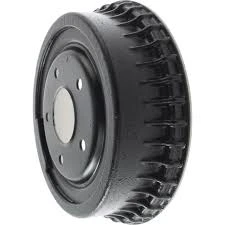
-
 Afrikaans
Afrikaans -
 Albanian
Albanian -
 Amharic
Amharic -
 Arabic
Arabic -
 Armenian
Armenian -
 Azerbaijani
Azerbaijani -
 Basque
Basque -
 Belarusian
Belarusian -
 Bengali
Bengali -
 Bosnian
Bosnian -
 Bulgarian
Bulgarian -
 Catalan
Catalan -
 Cebuano
Cebuano -
 Corsican
Corsican -
 Croatian
Croatian -
 Czech
Czech -
 Danish
Danish -
 Dutch
Dutch -
 Igilisi
Igilisi -
 Esperanto
Esperanto -
 Estonian
Estonian -
 Finnish
Finnish -
 French
French -
 Frisian
Frisian -
 Galician
Galician -
 Georgian
Georgian -
 German
German -
 Greek
Greek -
 Gujarati
Gujarati -
 Haitian Creole
Haitian Creole -
 hausa
hausa -
 hawaiian
hawaiian -
 Hebrew
Hebrew -
 Hindi
Hindi -
 Miao
Miao -
 Hungarian
Hungarian -
 Icelandic
Icelandic -
 igbo
igbo -
 Indonesian
Indonesian -
 irish
irish -
 Italian
Italian -
 Japanese
Japanese -
 Javanese
Javanese -
 Kannada
Kannada -
 kazakh
kazakh -
 Khmer
Khmer -
 Rwandese
Rwandese -
 Korean
Korean -
 Kurdish
Kurdish -
 Kyrgyz
Kyrgyz -
 Lao
Lao -
 Latin
Latin -
 Latvian
Latvian -
 Lithuanian
Lithuanian -
 Luxembourgish
Luxembourgish -
 Macedonian
Macedonian -
 Malgashi
Malgashi -
 Malay
Malay -
 Malayalam
Malayalam -
 Maltese
Maltese -
 Maori
Maori -
 Marathi
Marathi -
 Mongolian
Mongolian -
 Myanmar
Myanmar -
 Nepali
Nepali -
 Norwegian
Norwegian -
 Norwegian
Norwegian -
 Occitan
Occitan -
 Pashto
Pashto -
 Persian
Persian -
 Polish
Polish -
 Portuguese
Portuguese -
 Punjabi
Punjabi -
 Romanian
Romanian -
 Russian
Russian -
 Samoan
Samoan -
 Scottish Gaelic
Scottish Gaelic -
 Serbian
Serbian -
 Sesotho
Sesotho -
 Shona
Shona -
 Sindhi
Sindhi -
 Sinhala
Sinhala -
 Slovak
Slovak -
 Slovenian
Slovenian -
 Somali
Somali -
 Spanish
Spanish -
 Sundanese
Sundanese -
 Swahili
Swahili -
 Swedish
Swedish -
 Tagalog
Tagalog -
 Tajik
Tajik -
 Tamil
Tamil -
 Tatar
Tatar -
 Telugu
Telugu -
 Thai
Thai -
 Turkish
Turkish -
 Turkmen
Turkmen -
 Ukrainian
Ukrainian -
 Urdu
Urdu -
 Uighur
Uighur -
 Uzbek
Uzbek -
 Vietnamese
Vietnamese -
 Welsh
Welsh -
 Bantu
Bantu -
 Yiddish
Yiddish -
 Yoruba
Yoruba -
 Zulu
Zulu
Comparing Disk and Drum Brakes for Optimal Vehicle Performance and Safety Choices
Understanding Disk and Drum Brakes A Comprehensive Overview
Braking systems are an essential component of any vehicle, responsible for ensuring safety and control during operation. Among the various types of braking systems, disk and drum brakes are the most commonly used. Understanding the differences, advantages, and disadvantages of each type is crucial for vehicle maintenance and performance.
Disk Brakes
Disk brakes consist of a flat, circular metal disc, or rotor, that is attached to the wheel. When the brake pedal is pressed, brake pads clamp down on the rotor, creating friction that slows down or stops the vehicle. One of the primary advantages of disk brakes is their ability to dissipate heat quickly. This is particularly beneficial during high-performance driving or in situations involving repeated braking, such as going downhill. The efficient heat dissipation reduces the risk of brake fade, a condition where the brakes become less effective due to overheating.
Additionally, disk brakes are less prone to moisture retention. Water can cause drum brakes to temporarily lose effectiveness, but disk brakes maintain performance even in wet conditions thanks to their open design. This makes them a popular choice for vehicles that operate in diverse weather conditions.
Drum Brakes
On the other hand, drum brakes feature a cylindrical drum that rotates with the wheel. Inside the drum are brake shoes that expand outward to create friction when the brakes are applied. While drum brakes were once the standard in most vehicles, advancements in technology have led to a decline in their use, particularly in front braking systems. However, they still have distinct benefits.
disk and drum brakes

One notable advantage of drum brakes is their cost-effectiveness. They are generally cheaper to manufacture and install than disk brakes, making them a popular choice for budget-friendly vehicles. Additionally, drum brakes can provide more effective parking brake functionality, as the design naturally holds the vehicle in place more securely than some disk brake systems.
Comparing the Two Systems
When comparing disk and drum brakes, it’s essential to consider performance, maintenance, and application. Disk brakes typically offer superior braking performance, especially under heavy load or high-speed conditions. Their ability to self-ventilate reduces issues related to heat and moisture, making them reliable for a wide range of automotive applications, particularly in performance and luxury vehicles.
Conversely, drum brakes excel in situations where cost and compactness are primary concerns. They are often found in the rear braking systems of light-duty vehicles, where the demands are less intense. However, as vehicle performance expectations rise and safety becomes a more significant concern, the prevalence of disk brakes continues to increase.
Maintenance Considerations
In terms of maintenance, both systems require regular inspection and servicing. Drum brakes are more complex and can be challenging to service due to their enclosed design. This often results in higher labor costs when servicing is required. Disk brakes, on the other hand, are simpler to replace and repair since they are more accessible.
In conclusion, both disk and drum brakes have unique advantages and disadvantages. Disk brakes generally provide superior performance, efficiency, and heat dissipation, making them the preferred choice for modern vehicles. Conversely, drum brakes offer economic advantages and are still valuable in specific applications and vehicle types. Understanding the characteristics of each system can help vehicle owners make informed decisions about maintenance, upgrades, and overall safety. With the right knowledge, drivers can ensure their braking systems remain effective, providing the peace of mind that comes with reliable vehicle operation.
-
Rear Drum Brakes Maintenance TipsTala FouAug.04,2025
-
Key Components Affecting Brake Drum FunctionTala FouAug.04,2025
-
Important Inspection for Truck Drum BrakeTala FouAug.04,2025
-
How to Prepare for Changing Rear Drum BrakesTala FouAug.04,2025
-
Essential Tools for Cleaning Drum Brakes ProperlyTala FouAug.04,2025
-
Brake Drum Function GuideTala FouAug.04,2025
-
Safety Features of Red Brake DrumsTala FouAug.01,2025
